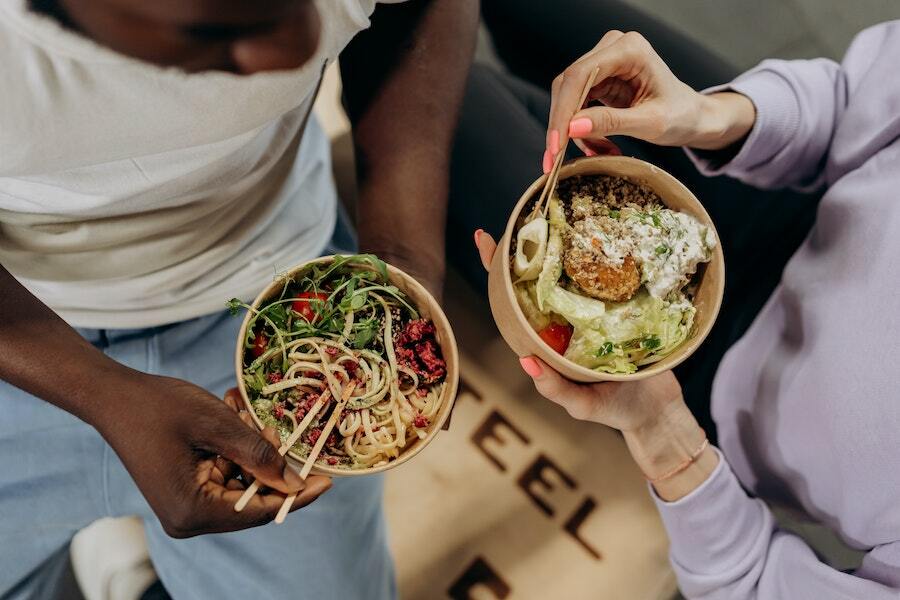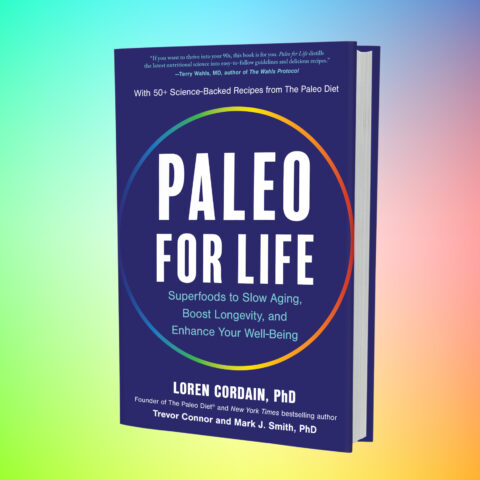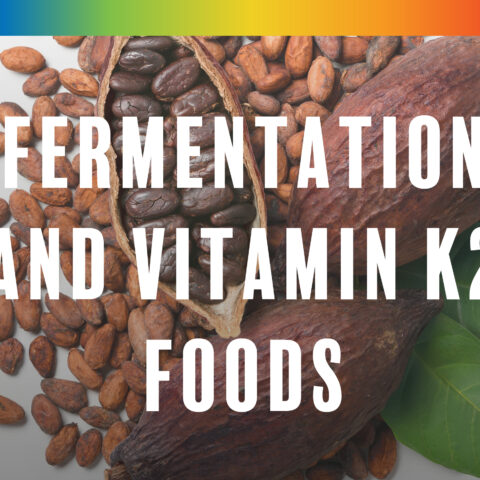Whole30 vs. Paleo: Comparing the Science

We have compared Whole30 vs. The Paleo Diet and which diet might be the best approach for you, depending on your goals. But how do these two popular diets compare from a scientific perspective?
In 2016, while speaking at the annual symposium for The Institute of Functional Medicine, I met one of the co-creators of Whole30, Dallas Hartwig. He told me how important the impact of a scientific paper authored by Dr. Cordain had on his sister’s health. [1] Coincidently, I was a co-author on the paper, which examined immune function modulation by dietary lectins in rheumatoid arthritis. Finding myself in conversation about this paper was a rare occurrence, and I remember thinking that our diet philosophies would therefore likely be closely aligned.
The conversation made clear that the founders of Whole30 were well versed on the research regarding Paleolithic nutrition and in particular the work of Dr. Cordain. It turns out that Whole30 was born from a simple challenge, while at a CrossFit® gym, to “eat clean” for 30 days. Many CrossFit coaches have advocated for following a Paleolithic dietary template and so it would not be surprising that “eating clean” might look very much like following The Paleo Diet.
Dr. Cordain’s investigation of ancestral nutrition has always been about helping humanity improve its health through science-based nutrition, without agenda. Today, our mission at The Paleo Diet is to continue examining the nutritional science with that same goal. Any individual or organization — like Whole30 — that uses the fundamental principles of Paleolithic nutrition, and uses them to help people improve their health and vitality, gets our approval.
So let’s examine the Whole30 diet through a scientific lens.
Comparing the Science
A review of the scientific literature in PubMed shows zero results for “Whole30”, so there is not much research backing the brand. This does not mean that there isn’t any research supporting the dietary guidelines for Whole30!
To the contrary, we believe Whole30 and The Paleo Diet are closely aligned in principle. We found 54 publications for “Paleolithic Diet”, around 500 research papers supporting Paleo health claims, and over 700 peer-reviewed research papers for topics related to Paleo or ancestral nutrition.
A Comparison of The Rules
Let’s dive into more detail on the similarities and differences between the two diets.
Before we do, remember this key difference between Whole30 and The Paleo Diet:
- Whole30 asks for 100% compliance for a short term, like 30 days. Expect short-term benefits.
- The Paleo Diet allows more flexibility but asks for long-term practice. Expect long-term benefits.
For example, for most people seeking long-term health benefits, we advocate following The Paleo Diet for most meals of the week, for months and years at a time. In order to sustain that kind of healthy eating discipline, we offer up flexible guidelines that allow flex meals throughout every week. We actually encourage you to enjoy some non-Paleo foods on a limited basis so that you can sustain your Paleo Diet for months or years and enjoy the long-term health benefits that a flexible Paleo Diet can provide.
And our recommendation is for newcomers to enjoy more flexibility (like 50-65% compliance) while more experienced Paleo eaters often find it easier to be more strict (like 75-85% compliance). In our experience, stricter compliance brings more health benefits and it’s up to individuals to decide how to pursue their health goals. For more info, see our guide How to Practice The Paleo Diet, which includes approaches to transition gradually and four easy ways to practice Paleo eating.
So when we say a food is not allowed on The Paleo Diet, we mean that for the best health results, most people should eliminate non-Paleo foods in 85% of their meals.
The below table compares Whole30 rules and our approach at The Paleo Diet. The table below draws rules published on the Whole30 website. “The Whole30 Program Rules” can be found at whole30.com (https://whole30.com/whole30-program-rules/).
| Whole30® Rules | The Paleo Diet® Guidelines |
|---|---|
| Eat real food | We agree and recommend that people avoid highly processed and BE/GMO foods. |
| Eat meat, seafood, and eggs; vegetables and fruit; natural fats; and herbs, spices, and seasonings. Eat foods with a simple or recognizable list of ingredients, or no ingredients at all because they’re whole and unprocessed. | We agree. Dr. Cordain defined this more specifically in 2002 as vegetables, fruits, natural meats, seafood, nuts and seeds. |
| Do not consume added sugar, real or artificial. | True since 2002. |
| Do not consume alcohol, in any form, not even for cooking. (And ideally, no tobacco products of any sort, either.) | We allow some flexibility here. It’s okay to enjoy sulfite-free wine occasionally under our flexible guidelines. |
| Do not eat grains. | True since 2002. |
| Do not eat most forms of legumes. | Since 2002, we have specified no legumes in any form. |
| Do not eat dairy. | True since 2002. |
| Do not consume carrageenan, MSG, or sulfites. | True since 2002, but we also exclude a much larger range of common food additives that are not natural to the human diet. |
| Do not consume baked goods, junk foods, or treats with “approved” ingredients.* | True since 2002. We discourage substitutions that create food products with unnaturally high quantities of foods that might be healthful in lower quantities. Even so, we do allow treats under our flexible guidelines. |
| Do not step on the scale or take any body measurements for 30 days. | We feel calorie counting is unnecessary under The Paleo Diet and we agree that our way of eating is about health gains, not necessarily weight loss or body composition changes. |
Table 1. Whole30 Program Rules and The Paleo Diet’s Congruence.
So, while Whole30 is often considered to be a stricter version of The Paleo Diet, the above table shows that Whole30 is essentially practicing The Paleo Diet at 100% compliance for 30 days at a time.
However, many Paleo Diet nutrition coaches ask their clients to follow a strict Paleo Diet as a temporary reset or to help knock down inflammation or ameliorate disease, particularly in cases of autoimmunity.
Comparing the Fine Print
The diets diverge when one examines the Whole30 fine print—foods that are considered exceptions to the rules and are allowed during Whole30.
| Whole30® | The Paleo Diet®* | |
|---|---|---|
|
Ghee or Clarified butter | These are the only source of dairy allowed while doing Whole30. Plain butter is not allowed, as you may be sensitive to the milk proteins found in non-clarified butter. | No dairy is allowed in any form including butter and ghee. We have written extensively about the negative consequences of dairy consumption, including ghee. |
| Fruit juice | Some products or recipes will include fruit juice as a stand-alone ingredient or natural sweetener, which is fine for the purposes of the Whole30. (We have to draw the line somewhere.) | Since real food does not have additives, fruit juice would not be included in real Paleo foods; however, a little natural juice from fruit would certainly be okay and so we agree that this position is more than reasonable. But fruit juices should certainly not be consumed in large quantities because fruit juice is basically sugar. |
| Certain legumes | Green beans and most peas (including sugar snap peas, snow peas, green peas, yellow peas, and split peas) are allowed. | While all of these legumes are less acidic than legumes such as kidney beans, which have to be soaked before consumption, they are still legumes and have significant quantities of dietary anti-nutrients that can be problematic for some individuals. All legumes are eliminated on The Paleo Diet and provide limited nutritional value. |
| Vinegar and botanical extracts | Most vinegar (including white, red wine, balsamic, apple cider, and rice) and alcohol-based botanical extracts (like vanilla, lemon, or lavender) are allowed during your Whole30 program. (However, malt-based vinegar or extracts are not, which will be clearly labeled as such, as they contain gluten.) | For the most part, The Paleo Diet would concur with this recommendation, however, vinegars derived from non-Paleo foods would not be included. That excludes rice vinegar, for example, since rice is a grain and therefore not Paleo. |
| Coconut aminos | All brands of coconut aminos (a brewed and naturally fermented soy sauce substitute) are acceptable, even if you see the words “coconut nectar” or “coconut syrup” in their ingredient list. | Because of its lower sodium content, coconut aminos are definitely a better alternative to soy sauce, which is unhealthy and not Paleo. However, many amino sauces are still made with added salt and so they are not part of The Paleo Diet. |
| Salt | Did you know that all iodized table salt contains sugar? Sugar (often in the form of dextrose) is chemically essential to keep the potassium iodide from oxidizing and being lost. Because all restaurants and pre-packaged foods contain salt, salt is an exception to our “no added sugar” rule. | The Paleo Diet is less concerned about the small amount of sugar consumed in added salt and more concerned about the salt itself. |
Table 2. Whole30 Program “Fine Print” Allowances and The Paleo Diet’s Divergence.
Whole30 Is Based on The Paleo Diet
It’s clear that Whole30 is based on The Paleo Diet and we think that’s great! Whole30 is helping introduce many people to a healthier way of eating. We hope that people introduced to Paleolithic nutrition through Whole30 give The Paleo Diet a try as a long-term approach to better health.
Given that Whole30 has based the majority of its principles on The Paleo Diet, it is unlikely that a clinical trial examining the respective benefits of the two diets, upon metabolic integrity, for example, would show much of a difference. However, when dealing with more complex diseases such as autoimmune complications, some of the allowances on Whole30 could be problematic.
The Whole30 diet calls itself a “reset” diet, but “at its heart is an elimination diet.” Yet Whole30 allows a lot of problematic foods in its program, as shown in Table 2. We feel that The Paleo Diet offers a cleaner, more effective template as an elimination diet. In fact, many nutrition clinicians work within the Autoimmune Protocol Diet as an elimination diet, which is also based on The Paleo Diet.
*Click here for more information on The Paleo Diet’s stance on dairy, ghee, legumes, vinegars, sea salt, and added salt.
References
1. Cordain L, Toohey L, Smith MJ and Hickey MS, Modulation of immune function by dietary lectins in rheumatoid arthritis. British Journal of Nutrition 83: 207-217, 2000.
Mark J. Smith, Ph.D.
One of the original members of the Paleo movement, Mark J. Smith, Ph.D., has spent nearly 30 years advocating for the benefits of Paleo nutrition.
More About The Author




